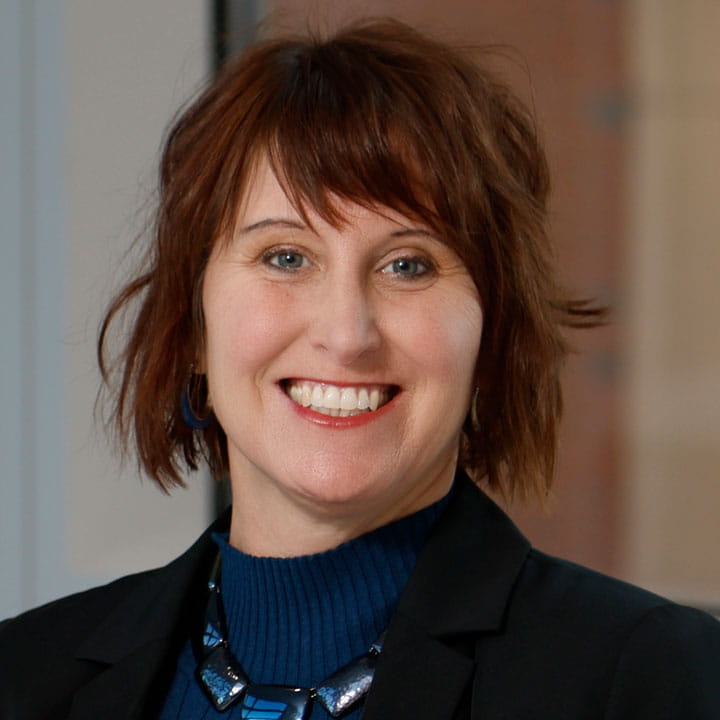
For a medical illustrator, illustrating a textbook is often viewed as the pinnacle of career success. For Ohio State’s Anthony Baker, having his illustrations published in a surgical textbook alongside some of the giants in his field goes above and beyond his wildest dreams.
His 150 illustrations are included in the 11th edition of Zollinger’s Atlas of Surgical Operations, alongside illustrations by such greats as Mildred Codding, the former student of famed medical illustrator Max Brödel; Carol Donner, Association of Medical Illustrators’ Lifetime Achievement Award recipient; Cleveland illustrator Marita Bitans; and Ohio State illustrator Paul Fairchild.
“My digital illustrations are in there with everybody else’s, and they match the atlas’s traditional pen and ink style,” Baker says. “Together, we’ve told the history of the most common surgical techniques over the past 80 years using visuals to communicate complicated science.”
Baker is a board-certified medical illustrator who directs The Ohio State University’s Department of Medical Visuals team, creating illustrations and graphics for Ohio State health sciences faculty, physicians and researchers.
From the inception, the atlas’s illustrations were designed to serve as a visual reference that captured the surgeon’s viewpoint.

What were once accomplished with pen and ink on clay boards, medical illustrator Anthony Baker now uses advanced digital illustration techniques for the Atlas.
The first illustrator, the famed Mildred Codding, used a pen-and-ink line style that was etched on scratchboard — from etchings on clay to digital illustration. Her technique set the style for the atlas that was emulated by subsequent illustrators. It’s believed the authors chose this method because it was faster to create and less expensive to reproduce. The illustration techniques changed over the years to use a translucent film process and, with Baker’s additions, digital illustrations.
Baker’s task of illustrating highly robotic and technical surgical skills that had never been included in the atlas proved to be challenging. Previous chapters were illustrated using an open surgical technique where the view was of the long incision in the abdomen, for instance, that was spread wide, allowing the viewer to see everything straight on. But in laparoscopic surgery and in robotic surgery, the point of view is different.
“Representing the anatomy from the camera’s point of view was challenging because the angle and the perspective of the anatomy look different from how one would see it straight on, as in an open surgery,” Baker says. “The surgeon has instruments, and the camera is going directly inside the patient and the view is what you see through the camera. Instead of looking straight down, often the point of view is coming at an angle, like a plane coming in for a landing.”

Illustrations depicting the room setup and controls of a robotic abdominal surgery.
Baker wanted to illustrate things in a way that the surgeon performing the operation could appreciate while remaining true to the actual anatomy and the complexity of the instruments and equipment. He used digital and design illustration software to add technical elements of the equipment and surgical instruments used in a robotic surgery suite.
“I downloaded 3D anatomical models, which helped me to visualize the anatomy from different angles,” Baker says. “The other advantage to illustrations is that you can leave out the blood and the gore and draw anatomy underneath other anatomy.”
Baker employed the same process to illustrate aspects of endovascular surgery, which is an innovative, less-invasive procedure used to treat problems affecting the blood vessels, such as an aneurysm. The surgery involves making a small incision near each hip to access the blood vessels.
E. Christopher Ellison, MD, FACS, the Robert M. Zollinger Professor of Surgery Emeritus and co-author of the atlas, says that none of the other major general surgery atlases has sections on robotics or endovascular surgery.
“Having Anthony on site, so he could go into surgeries to see what was going on to illustrate it, was key,” Ellison says.

When you give to The Ohio State University Wexner Medical Center, you’re helping improve lives
We’re committed to making advancements in research, education and patient care that will have an impact throughout Ohio and the world.
Ways to Give




